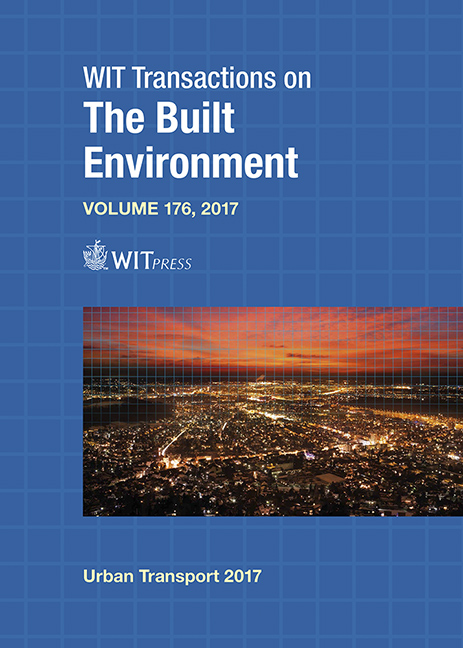APPRAISING THE INFLUENCE OF STREET PATTERNS ON NON-MOTORIZED TRAVEL BEHAVIOUR IN AHMEDABAD CITY, INDIA
Price
Free (open access)
Transaction
Volume
176
Pages
12
Page Range
527 - 538
Published
2017
Size
560 kb
Paper DOI
10.2495/UT170451
Copyright
WIT Press
Author(s)
RONIKA POSTARIA
Abstract
Our cities have come a long way over time in terms of development. What is often ignored or taken for granted is the proportion of pedestrians and cyclists strolling around the city, who are always having to make compromises. It is important to know that there are variations in urban areas – the level of variety a street offers – each element defines the route options, which influences the travel pattern. It is therefore assumed that street patterns influence several aspects of non-motorized travel choices. This paper attempts to answer the question: “do the different assumptions regarding pedestrians and cyclists based on street pattern exhibit any modifications when tested on the ground (in Ahmedabad city)?” The research methodology consisted of various stages: in the initial stage, street patterns were differentiated based on the mathematical assimilation of their different characteristics and their respective influence on NMT behaviour was studied; in the later stage, surveys (a mixture of quantitative and qualitative questions) were conducted separately for pedestrians and cyclists. To reach the conclusions, the literature study and users’ perception were assessed simultaneously. Various relations among different street patterns and non-motorized travel based on our understanding were formulated and tested in two ways, i.e. topologically and through on-ground users’ preferences. Then, the test results were compared to reach the conclusion. The outcomes were different for both pedestrians and cyclists; there was no relation found between the street pattern and cyclists’ travel choices. On the other hand, after looking at the results of both the tests, it was grasped that although pedestrians themselves were found to be unaware of the direct implications, their answers reflected how their choices were related to several aspects of the street pattern. The paper, therefore, concluded: ‘street pattern influences several aspects of pedestrians’ travel choices’.
Keywords
non-motorized travel choices, street pattern, pedestrians, cyclists, street topology, Ahmedabad city





